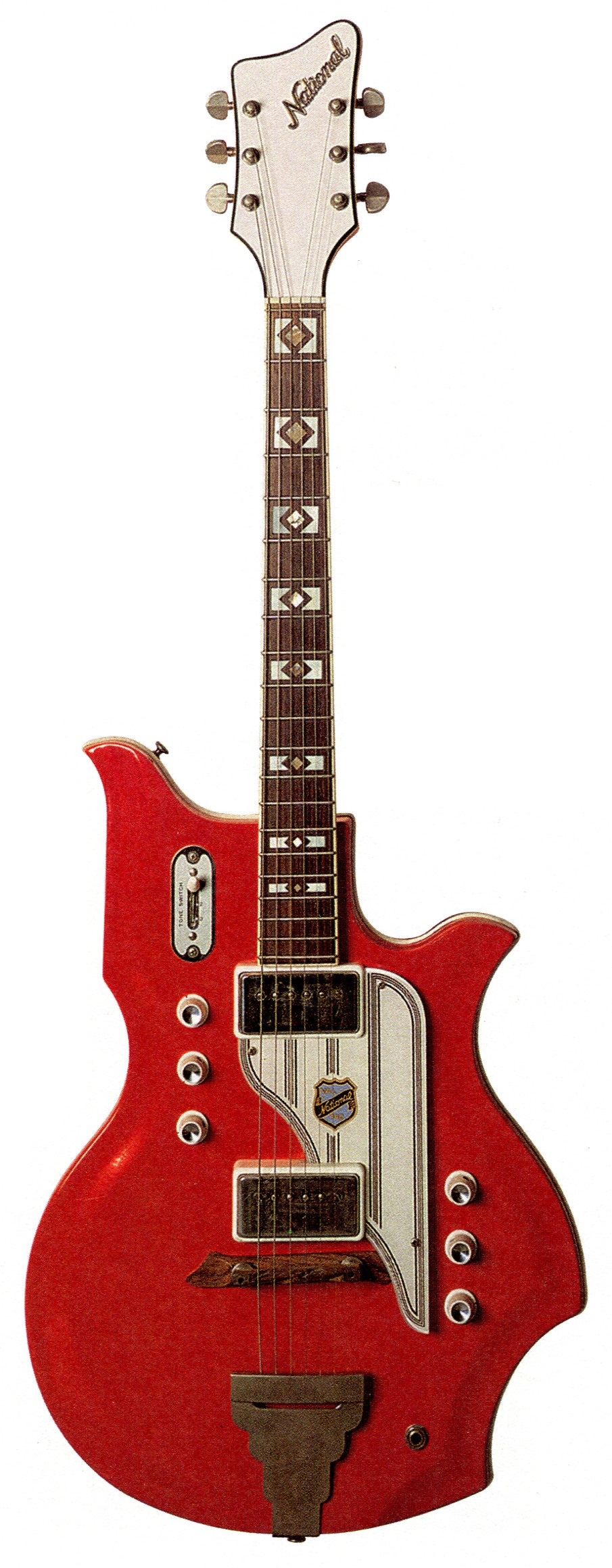National Glenwood 95

National coined the term Res-o-glas for the fiberglass bodies of it’s early 1960s guitars and described the material as “polyster resins with threads of pure glass”.
National also claimed that it’s Res-o-glas was “more adaptable and workable than conventional wood”, and the company seemed to prove that point in 1962 with the introduction of guitars with bodies resembling a map of the US.
Res-o-glas was, in fact, easier to work with when it came to finishes. National sprayed the finish color into the mold for the body, then filled it with the fiberglass material, and the two body pieces came out of the mold already finished. The map-shapes came in three groups of three models each.
At the top were the Glenwoods, with model numbers in the 90s. Next came the Newports, with numbers in the 80s, followed by the wood-bodied Westwoods, with model numbers in the 70s.
Within each series, models featured a variety of finish colors, electronic configurations and ornamentation. The Glenwood 95 had a pair of pickups, a “vermillion” finish, and flashy diamond in-square fingerboard inlays.
